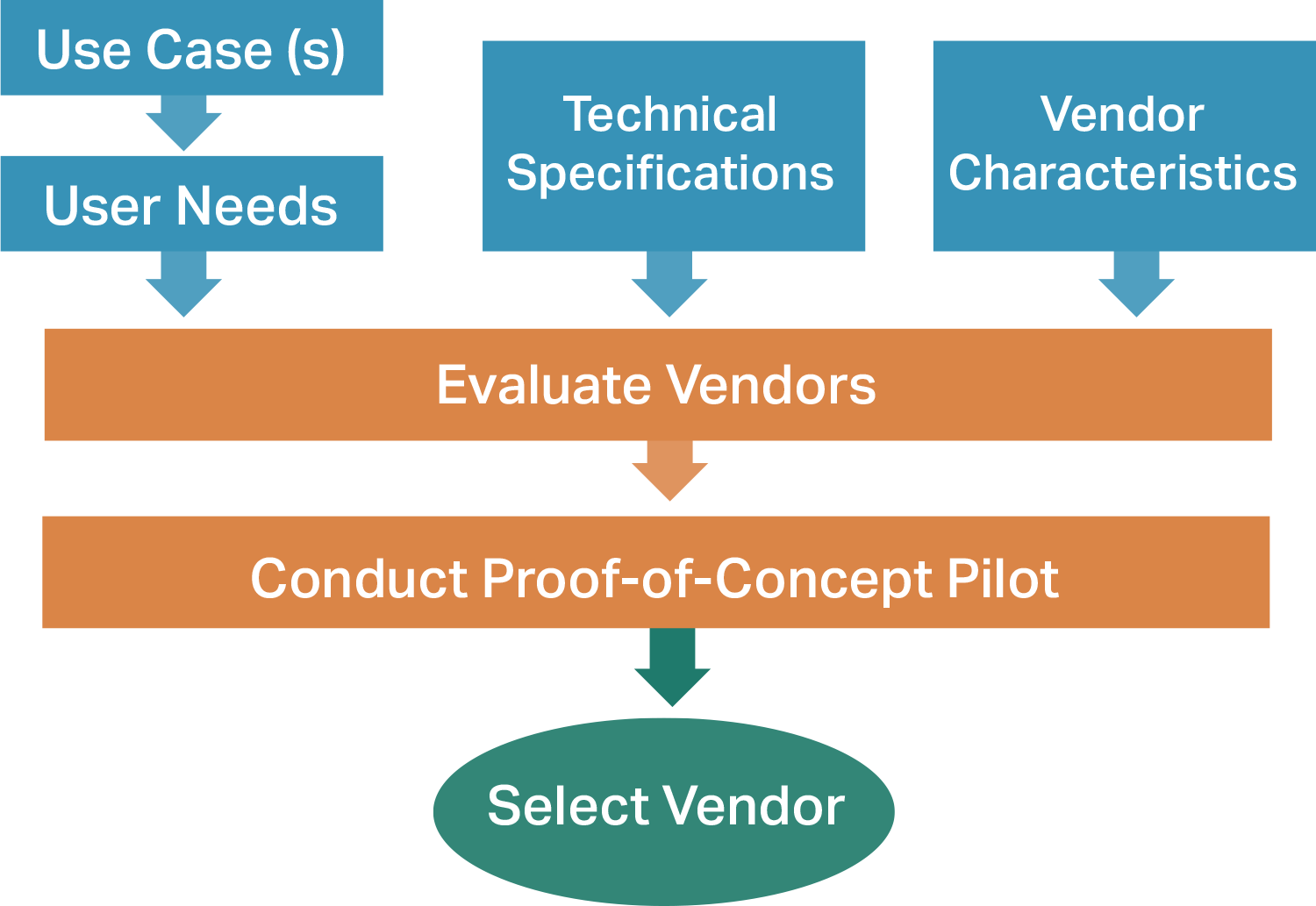Vendor Selection Process
Selecting the right telehealth vendor requires a thorough evaluation of user needs, technical specifications, and vendor characteristics. Below is a structured approach to guide your decision-making.

Understanding User Needs
To ensure a seamless telehealth experience, define the features and functionalities required to support your service(s) based on your specific use case.
- Features – Identify necessary capabilities based on clinical workflows and how providers and staff plan to use the technology.
- Functionality – Ensure the solution supports patient engagement, provider usability, and operational efficiency.
Assessing Technical Specification
A vendor’s technology must align with your infrastructure, security requirements, and scalability needs. Key considerations include:
- Interfaces & Integration
- Determine whether the platform must integrate with existing systems (e.g., scheduling, EHR/EMR).
- Not all telehealth services require direct EHR integration—design your workflow first before deciding on integration needs.
- Standards & Compliance
- If the solution handles Protected Health Information (PHI), ensure HIPAA compliance and, if applicable, FDA certification.
- Verify adherence to industry standards for data security, interoperability, and accessibility.
- Quality Attributes
- System architecture – Understand how data security, reliability, and system performance are maintained.
- User experience – Ensure the platform is intuitive for both providers and patients.
- Integration capabilities – Assess the level of integration (e.g., simple PDF exports vs. full API access vs. native integration).
Evaluating Vendor Characteristics
Beyond technology, a vendor’s stability, leadership, and financial health are critical to long-term success.
- Company Background
- History – Was the company founded through research, spun off from a larger corporation, or developed by entrepreneurs? This can provide insight into its innovation potential and long-term viability.
- Leadership & Expertise
- Who are the executives, and what is their background?
- Does the company have clinical leadership to balance business ambitions with real-world healthcare needs? A strong clinical presence is a major advantage.
- Financial Stability & Growth
- Is the company venture-backed, privately held, or part of a larger corporate structure?
- Are they growing sustainably, or are they aggressively scaling with external funding?
- Look beyond impressive-sounding percentages—338% growth means little if revenue only went from $150,000 to $357,000. Ask for real financial data under a confidentiality agreement.
- Track Record: Case Studies & References
- Request detailed case studies and speak directly with clinical and technical leaders from organizations that have used the vendor’s solution.
- Investigate whether their pilots and success stories translate into sustainable, scalable implementations.
By systematically evaluating user needs, technical specifications, and vendor characteristics, your organization can make an informed decision, selecting a vendor that aligns with both current and future telehealth goals.





